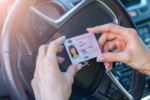South Carolina’s roadways are bustling with activity, from morning commuters navigating the streets to tourists exploring its scenic highways. With so many vehicles, cyclists, and pedestrians sharing the roads, understanding the state’s right of way laws is crucial for ensuring safety and avoiding legal complications. These laws are designed to regulate traffic flow and protect all road users, but a lack of knowledge about them can lead to confusion, accidents, and fines.
This article breaks down South Carolina’s right of way laws, explaining their key aspects, situations where they apply, and why understanding them is essential for anyone driving, walking, or biking in the state.
What Are Right of Way Laws?
Right of way laws govern who has the legal right to proceed in various traffic situations. These laws are not just about courtesy but play a vital role in maintaining order and safety on the roads. South Carolina’s laws are outlined in the South Carolina Code of Laws, Title 56, which provides detailed guidance for motorists, cyclists, and pedestrians.
The fundamental principle is simple: some road users must yield to others depending on the circumstances. For example, drivers approaching an intersection with a stop sign must yield to cross traffic that does not have a stop sign.
Right of Way at Intersections
One of the most common areas where right of way laws come into play is intersections. In South Carolina, intersections without traffic signals are governed by the rule that the driver on the left must yield to the driver on the right when two vehicles arrive simultaneously.
However, when traffic signals are present, they dictate the flow of vehicles. If the light is green, drivers have the right of way. Conversely, vehicles must yield when turning left at an intersection, even on a green light, to oncoming traffic unless a green arrow permits the turn.
Pedestrians also play a critical role at intersections. According to the South Carolina Department of Transportation (SCDOT), pedestrians crossing at marked or unmarked crosswalks have the right of way, and drivers must yield to them. This rule emphasizes the importance of driver vigilance in busy urban areas.
Right of Way for Emergency Vehicles
Emergency vehicles, such as police cars, ambulances, and fire trucks, have special privileges under South Carolina’s right of way laws. When these vehicles approach with flashing lights or sirens, all other vehicles must pull over to the right side of the road and stop until the emergency vehicle passes.
Failing to yield to an emergency vehicle can result in severe penalties, as it endangers not only the lives of those in need but also the emergency responders. The South Carolina DMV emphasizes that this law ensures prompt response times during critical emergencies.
Right of Way for Pedestrians and Cyclists
South Carolina takes the safety of vulnerable road users, including pedestrians and cyclists, seriously. Drivers are required to yield to pedestrians crossing the road in crosswalks, whether they are marked or unmarked. Additionally, pedestrians should not step into the path of a moving vehicle, creating a hazard.
Cyclists, on the other hand, have the same rights and responsibilities as motorists. This means that when a cyclist is traveling on a road, they must adhere to traffic signals and yield the right of way when necessary. At the same time, motorists are obligated to maintain a safe distance from cyclists and yield when passing.
The South Carolina Bicycle Law, detailed by SCDOT, specifies that motorists must provide at least three feet of clearance when overtaking a bicycle. This law aims to reduce accidents and promote safer coexistence between drivers and cyclists.
Right of Way at Roundabouts
Roundabouts are increasingly common in South Carolina as they promote better traffic flow and reduce collision points compared to traditional intersections. The rule is straightforward: drivers entering the roundabout must yield to vehicles already inside it. Once inside, motorists should follow the flow of traffic and avoid stopping or overtaking other vehicles.
Pedestrians and cyclists are also entitled to the right of way at roundabout crosswalks, reinforcing the need for attentiveness among all road users.
Common Misconceptions About Right of Way
Many misunderstandings about right of way laws persist. For instance, some drivers believe they always have the right of way when making a turn if their light is green. However, this is only true if there are no pedestrians crossing or oncoming traffic to consider.
Another common misconception involves four-way stops. The driver who arrives first has the right of way, but when vehicles arrive simultaneously, the one on the left must yield to the one on the right.
The National Highway Traffic Safety Administration (NHTSA) notes that a lack of understanding of these nuances often leads to accidents that could have been avoided with proper knowledge of the laws.
Penalties for Violating Right of Way Laws
Failing to yield the right of way is not only dangerous but also carries legal consequences. Drivers who violate right of way laws in South Carolina may face fines, points on their driving record, or even license suspension in severe cases. Repeated offenses can lead to higher penalties, as outlined by the South Carolina Traffic Court.
Conclusion: Safety Through Understanding
South Carolina’s right of way laws are designed to protect everyone on the road, from motorists to cyclists and pedestrians. Understanding and adhering to these laws is not only a legal obligation but also a social responsibility.
As South Carolina continues to develop its infrastructure, including more roundabouts and bike-friendly roads, awareness of right of way laws becomes increasingly essential. Drivers, pedestrians, and cyclists must remain vigilant, courteous, and informed to ensure that the state’s roads remain safe for all.
By familiarizing yourself with South Carolina’s right of way regulations, you contribute to a safer, more efficient transportation system—one where accidents and misunderstandings become a thing of the past.
Disclaimer – Our team has carefully fact-checked this article to make sure it’s accurate and free from any misinformation. We’re dedicated to keeping our content honest and reliable for our readers.








